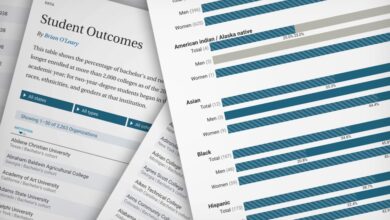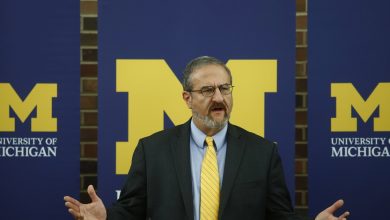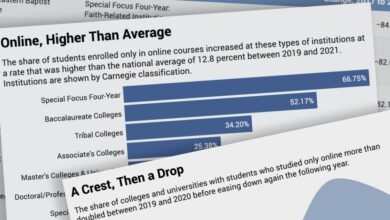Just 5 Universities Produce One-Eighth of the Nation’s Tenure-Track Professors

[ad_1]
Just five universities have produced one-eighth of the tenure-track professors at American doctoral institutions, and 80 percent of such professors earned their Ph.D.s at just 20 percent of the nation’s universities.
That’s according to a striking new study, published in Nature, that analyzed the academic employment and doctoral education of more than 295,000 tenured or tenure-track faculty members employed between 2011 and 2020 at 368 Ph.D.-granting universities in the United States. Researchers found “extreme inequality” in faculty hiring across academic fields.
While the impact of prestige itself has been well documented — faculty members at prestigious institutions write more papers, receive more citations, and win more awards — the authors of this study wanted to focus on how faculty-hiring practices perpetuate prestige over time.
The researchers found that the University of California at Berkeley, Harvard University, the University of Michigan at Ann Arbor, the University of Wisconsin at Madison, and Stanford University produce nearly 14 percent of the nation’s tenure-track faculty members.
Those institutions are part of a small group of universities that exchange faculty members with one another and “export” them to institutions that are considered less prestigious. But institutions in the higher-prestige group rarely hire candidates from lower-prestige universities.
Prestige “appears to dominate the way that faculty-hiring committees actually choose who to hire,” said Aaron Clauset, a professor of computer science at the University of Colorado at Boulder and co-author of the study. (The researchers defined “prestigious institutions” based on their place in the faculty-hiring network — in other words, “their graduates can get jobs at many other prestigious places,” Clauset said.)
The core institutions “are, in some sense, supplying the ideas of a large fraction of the entire intellectual system,” Clauset said. “The size of the inequality suggests that we are almost surely missing out on many extremely talented people and innovative ideas.”
Rounding out the top 10 of faculty-producing universities were the University of Illinois at Urbana-Champaign, the Massachusetts Institute of Technology, the University of Texas at Austin, Cornell University, and Columbia University.
Three other researchers at Boulder worked on the study: the lead author, Hunter Wapman, a doctoral candidate in computer science; Sam Zhang, a doctoral candidate in applied mathematics; and Daniel Larremore, a professor of computer science.
Illusory Gains for Women
The study also examined the state of gender representation in academe. “We’ve all seen these figures or heard these statistics about how representation for women is getting better over time,” Clauset said.
But because the researchers analyzed data from nearly a 10-year span, they were able to look at who was hired and who left their faculty jobs during a fairly long period. And they found that even though the gender ratio is becoming more balanced, that trend stems from the fact that the people who are retiring are overwhelmingly male; women’s representation among new hires has remained flat, and newly hired faculty members are still more likely to be men.
“Unless we change the way academia is recruiting women and retaining them as faculty, the appearance of gains in terms of women’s representation will disappear,” Clauset said.
The study also identified another important yet understudied piece of the faculty-representation puzzle: retention. “It’s not just about hiring people into a job,” Clauset said. “It’s about keeping them.”
Professors who earn their advanced degrees in the United States, Canada, or Britain are more likely to stay in their tenure-track jobs, whereas people who received their Ph.D.s at institutions outside those countries were more likely to leave their positions. The same is true for faculty members who earn their doctorates at lower-prestige universities.
“These two things present a conundrum as to why,” Clauset said. “How is it that academia is failing to retain these people? They’re highly trained, highly educated. They won the lottery and got the professor job. Why did they leave? Why couldn’t we keep them?”
Because the study looked only at doctoral institutions in the United States, it’s possible that those professors left to take a job at a liberal-arts college or a foreign institution. Or they could have switched to a non-tenure-track position.
“I don’t think that our results have any implication that any department or university should, because of our results, decide to scale back their programs, because academia is not the only market for a Ph.D., by any measure,” Clauset said.
Still, Clauset said, the study is a sign that colleges must rethink how, and from where, they recruit and retain faculty members.
“If we want to aspire to the ideal of a meritocracy,” he said, “then thinking about how to broaden our notion of what ideas are interesting and valuable and likely to be impactful in the future is surely going to be useful in terms of actually advancing scholarship.”
[ad_2]
Source link






